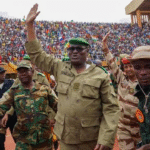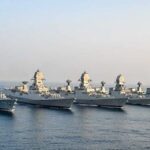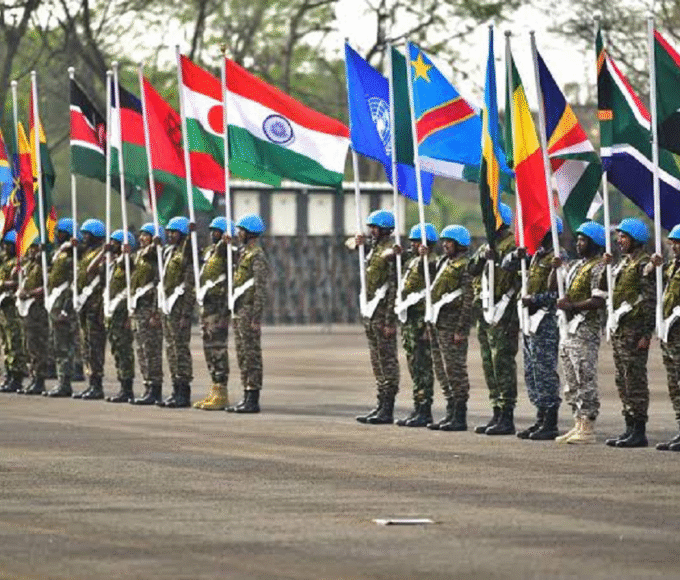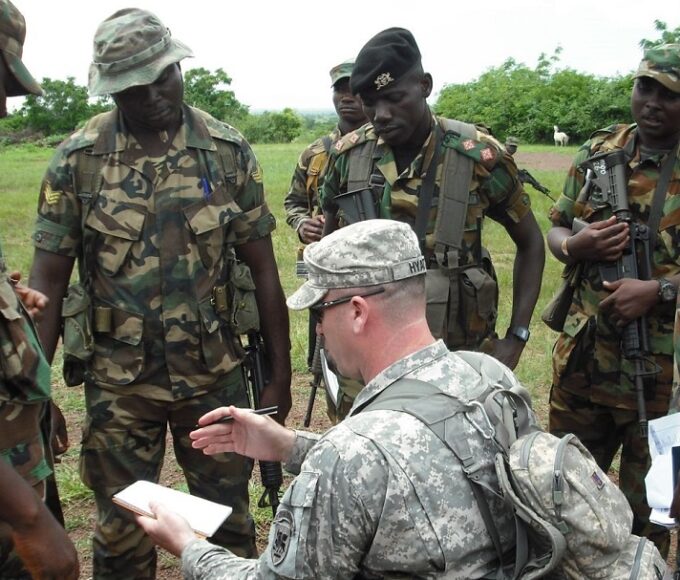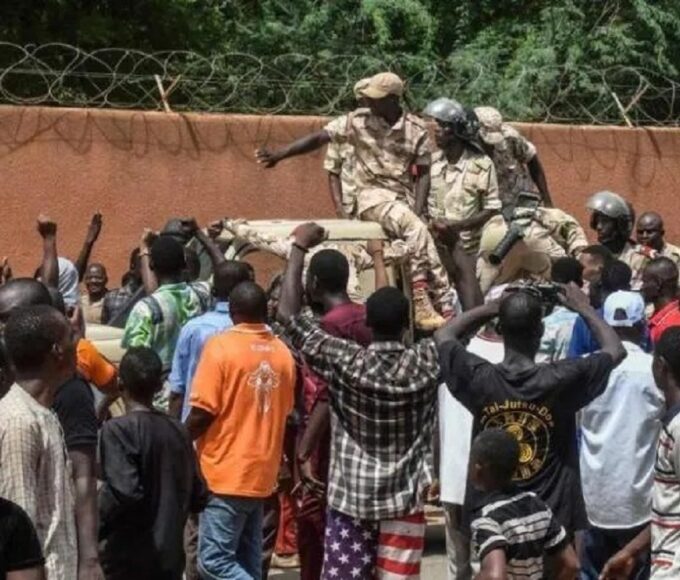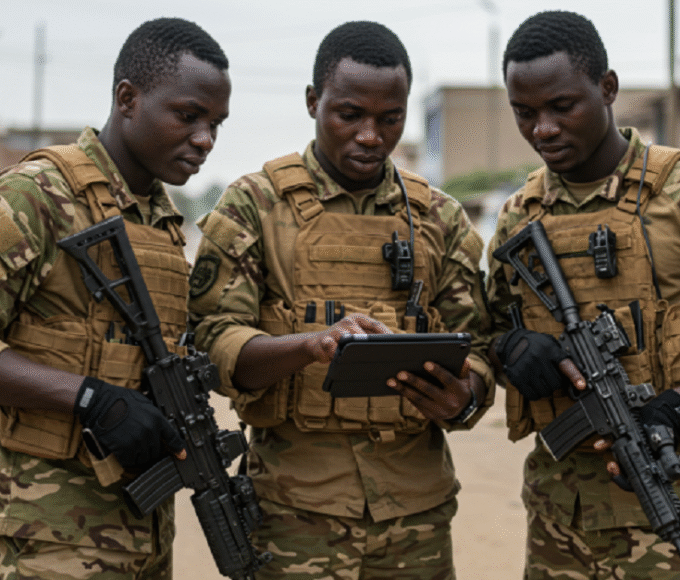DSEI 2025: Navigating the Fine Line Between Defence and Peace

The wind cuts sharply across the open lawns of the American Cemetery in Cambridge. Amid thousands of white marble crosses, the Stars and Stripes stand beside the Union Jack—raised high before being gently lowered and folded with solemn care. Eighty years have passed since Victory in Europe, yet the silence of that resting place still speaks louder than the roar of any aircraft or artillery shell.
This September, those same flags will fly again—not over graves, but inside London’s ExCeL Centre, where the global defence and security community gathers for DSEI 2025. The United States will arrive with its largest presence yet: more than 200 companies, from established giants to first-time innovators, filling a pavilion the size of two football fields. It will be a showcase of technology, ambition, and national pride.
For many, the symbolism runs deep. During World War II, American and British factories worked day and night to forge the tanks and aircraft that turned the tide of history. Today, their successors build unmanned drones, algorithms that can anticipate threats, and cyber systems designed to guard invisible digital frontiers. The spirit of cooperation endures, though the tools have changed beyond recognition.
And yet, therein lies the unease. Eight decades ago, industrial production meant survival—an urgent struggle to restore peace from tyranny. Now, the defence industry operates in a more complex arena. Innovation strengthens deterrence, but it also risks fuelling a cycle in which weapons evolve faster than diplomacy, and markets sometimes profit from instability. DSEI is at once a celebration of allied strength and a reminder of how deeply economics and security are now intertwined.
The real challenge is not whether America and its allies can create the next generation of weaponry. They can, and they will. The pressing question is whether the same ingenuity can be directed toward preventing conflict. Imagine if the urgency behind AI-enabled missile defence were equally applied to conflict-resolution systems, or if the tools of cyber deterrence were used as vigorously to safeguard democratic institutions as to secure military networks.
Flags flown over graves are not only symbols of sacrifice; they are warnings. They remind us that each generation inherits the burden of vigilance—and the responsibility to bend technology toward peace, not just power.
As DSEI 2025 opens its doors, let us rightly celebrate allied innovation. But let us also demand more: that the brilliance on display in London serves not only the goal of winning wars, but the higher purpose of ensuring that we never again need to fight them.
- . Peace Through Technology? DSEI 2025 Challenges the Status Quo
- Allied Tech at DSEI 2025: Progress or Provocation?
- and Futures: DSEI 2025’s Dual Legacy
- Can Innovation Prevent War? Lessons from DSEI 2025
- DSEI 2025 Explores the Fine Line Between Deterrence and Escalation
- DSEI 2025 Highlights the Tension Between Security and Diplomacy
- DSEI 2025: A Global Showcase of Power—and a Plea for Peace
- DSEI 2025: Honoring History
- DSEI 2025: Where Defense Innovation Meets the Call for Peace
- Factories
- Flags
- From War Graves to Trade Halls: DSEI 2025’s Sobering Message
- Rethinking the Future of Defense
King Richard Igimoh, Group Editor ALO
King Richard Igimoh, Group Editor African Leadership Organisation is an award-winning journalist, editor, and publisher with over two decades of expertise in political, defence, and international affairs reporting. As Group Editor of the African Leadership Organisation—publishers of African Leadership Magazine, African Defence & Security Magazine, and Africa Projects Magazine—he delivers incisive coverage that amplifies Africa’s voice in global security, policy, and leadership discourse. He provides frontline editorial coverage of high-profile international events, including the ALM Persons of the Year, the African Summit, and the African Business and Leadership Awards (ABLA) in London, as well as the International Forum for African and Caribbean Leadership (IFAL) in New York City during the United Nations General Assembly.
Recent Posts
Categories
- Air & Aerospace15
- Border Security14
- Civil Security3
- Civil Wars4
- Crisis4
- Cyber Security4
- Defense15
- Diplomacy17
- Entrepreneurship1
- Events5
- Global Security Watch6
- Industry6
- Land & Army7
- Leadership & Training3
- Military Aviation2
- Military History27
- Military Speeches1
- Naval & Maritime8
- Resources1
- Security12
- Special Forces1
- Systems And Technology8
- Tech6
- Uncategorized3
- UNSC1
- Veterans6
- Women in Defence9
Related Articles
INDIA’S GROWING MILITARY PARTNERSHIPS WITH AFRICA
India’s engagement with Africa is undergoing a quiet but powerful transformation. What...
ByKing Richard Igimoh, Group Editor ALOOctober 14, 2025EVOLVING HORIZONS: TRAINING THE AFRICAN SOLDIER IN A CHANGING LANDSCAPE
The training of African soldiers has undergone a profound transformation in recent...
ByKing Richard Igimoh, Group Editor ALOOctober 2, 2025COLD WAR AFRICA: PROXY WARS AND THEIR IMPACT
The Cold War in Africa, spanning from the late 1940s to the...
ByKing Richard Igimoh, Group Editor ALOSeptember 26, 2025AI AND AFRICA’S MILITARY INTELLIGENCE: PROMISE AND PERIL IN A TRANSFORMING SECURITY LANDSCAPE
Africa’s military landscape is entering a new chapter, shaped by the rapid...
ByKing Richard Igimoh, Group Editor ALOSeptember 22, 2025

